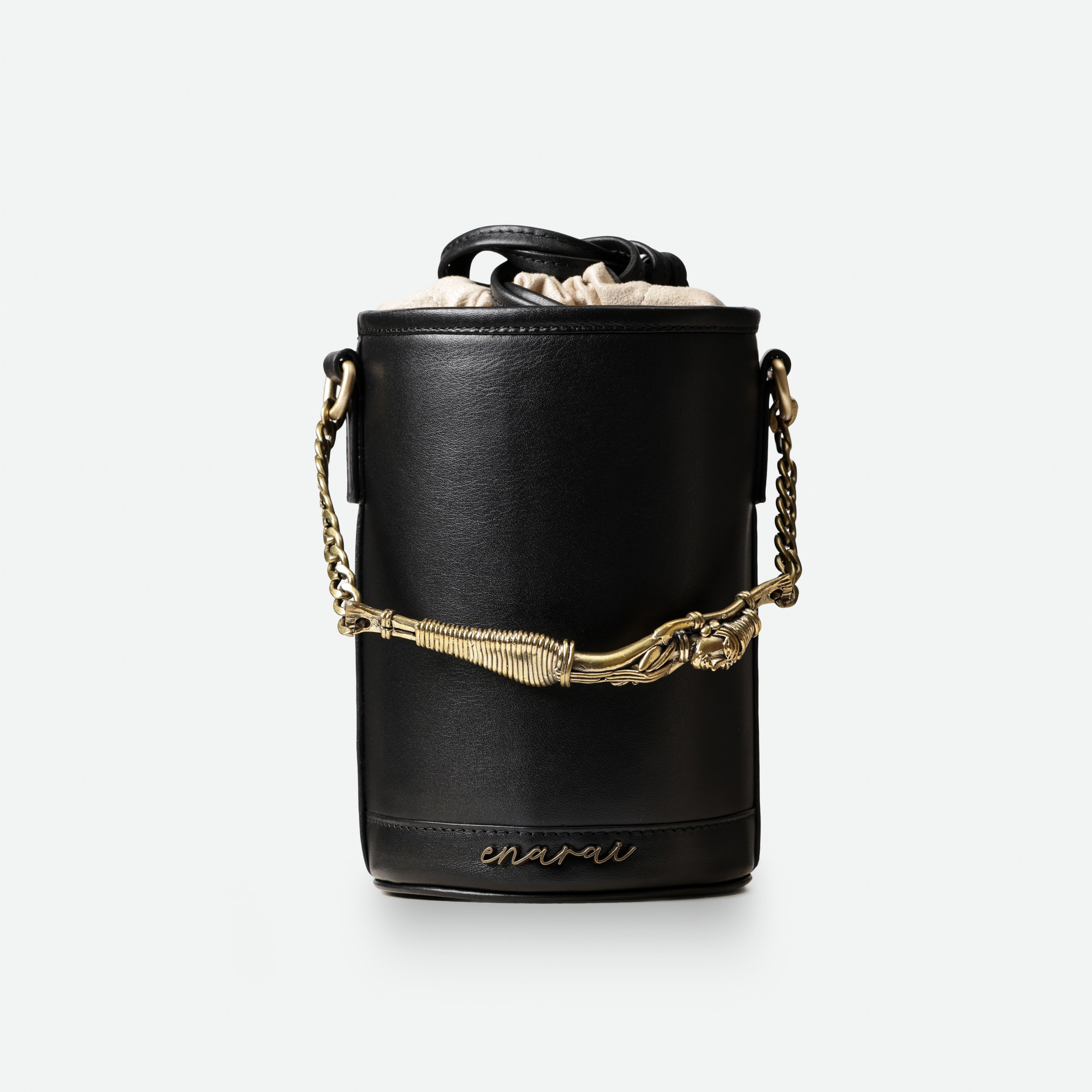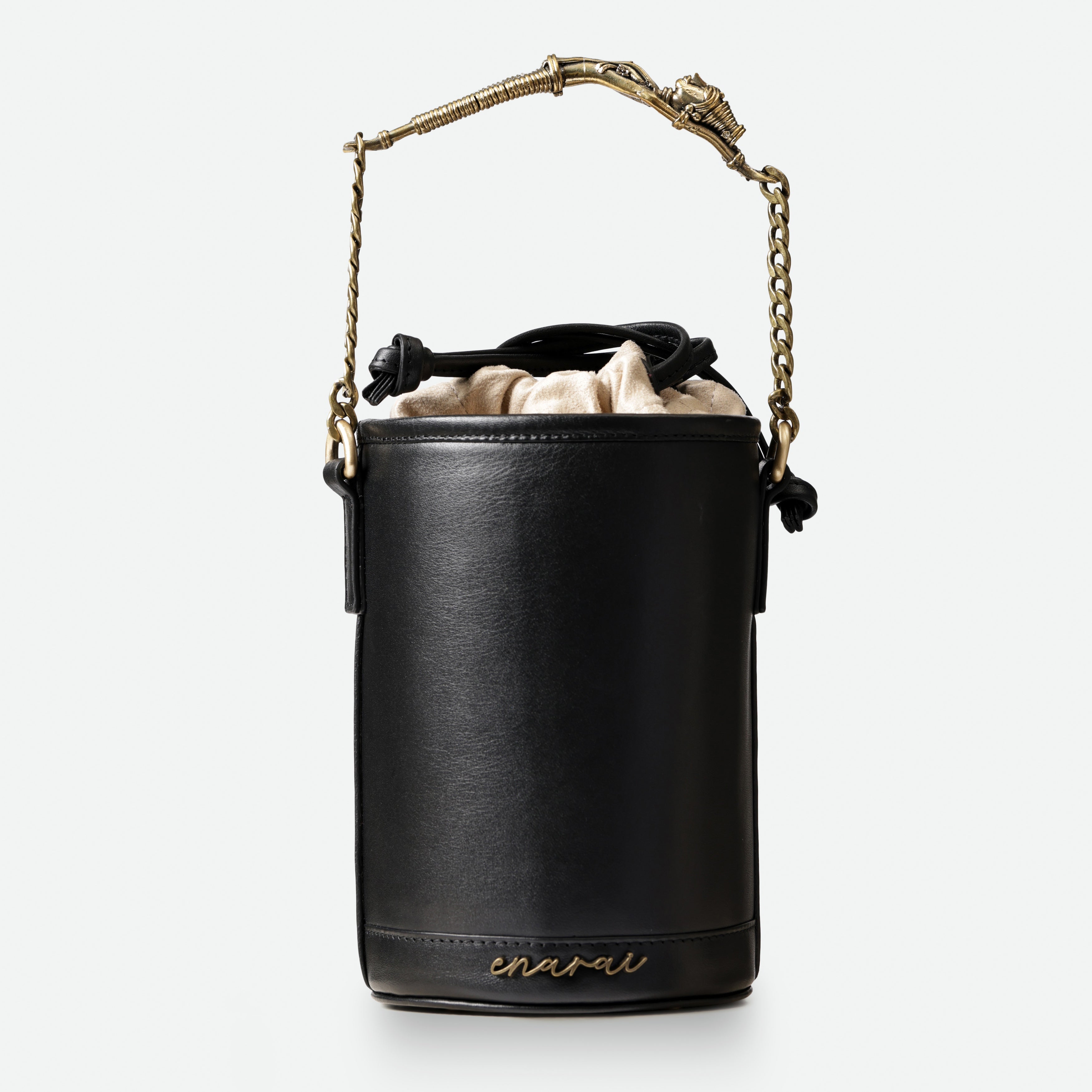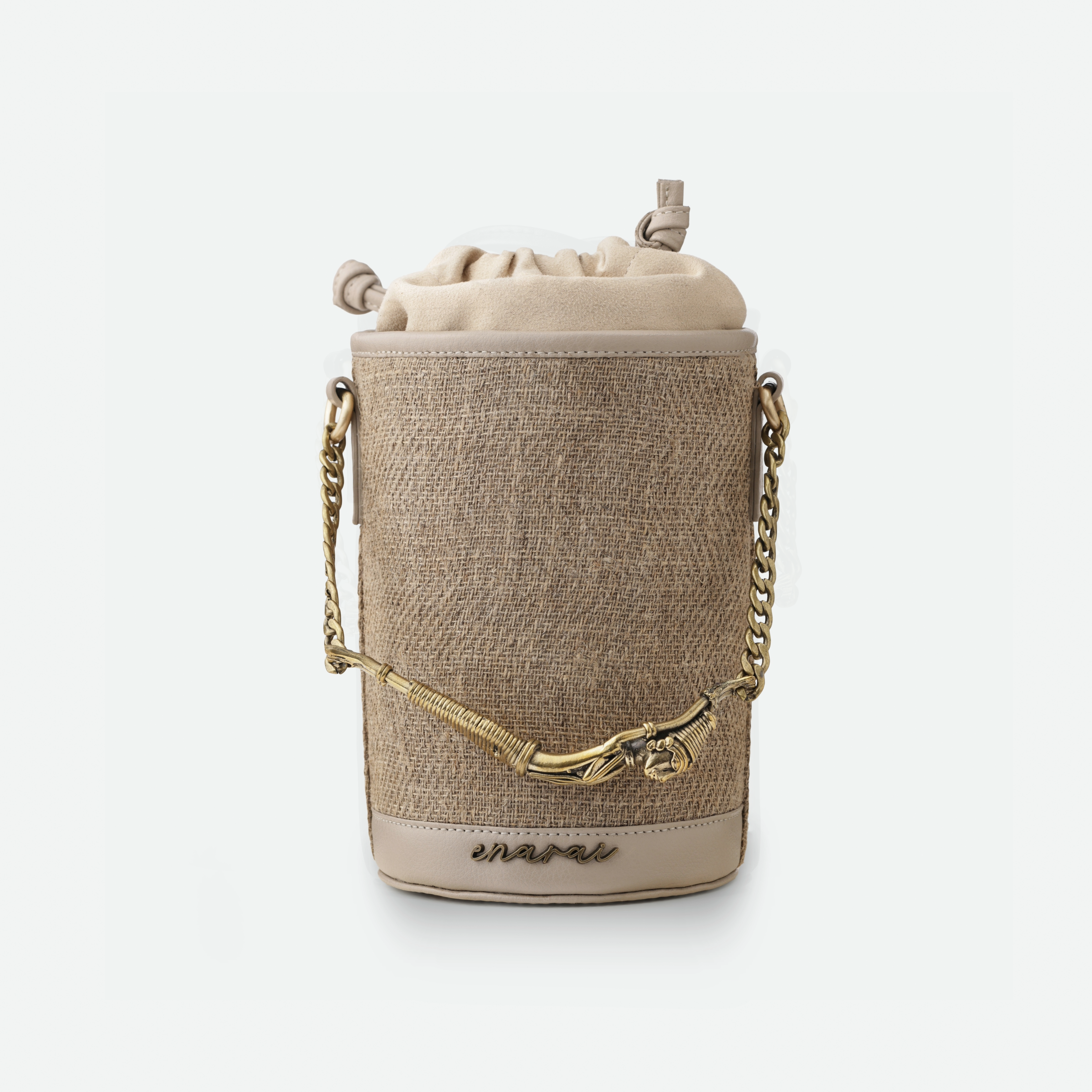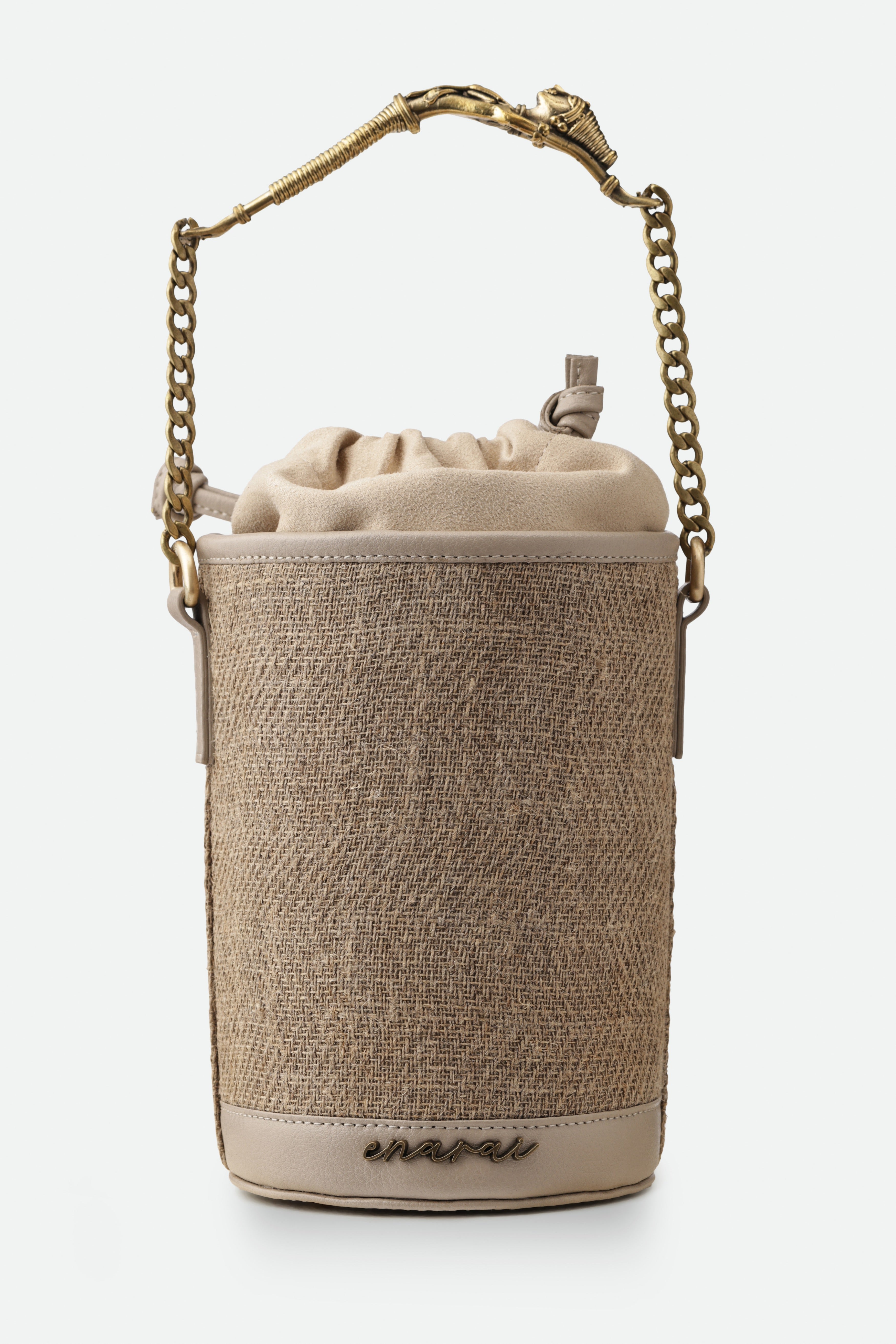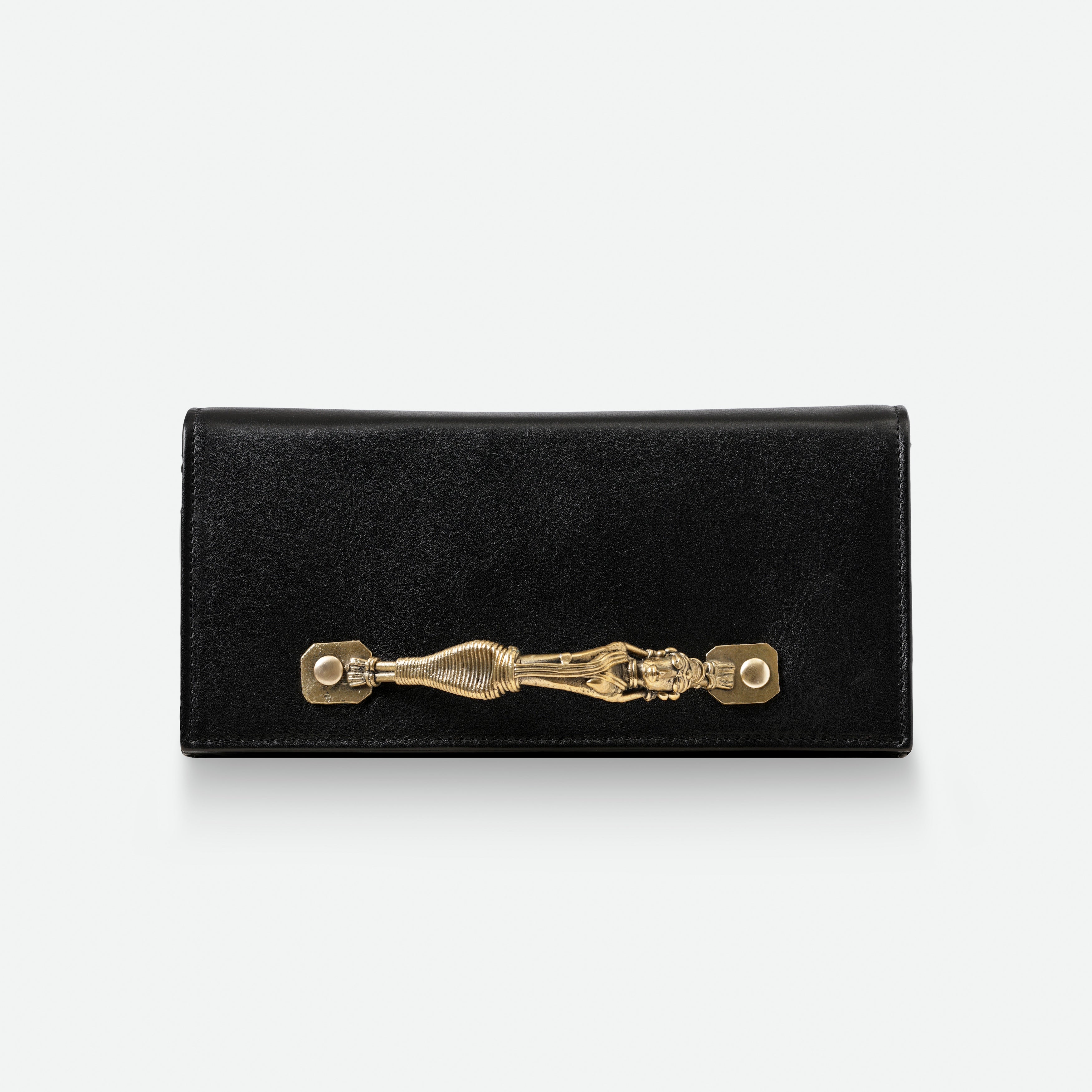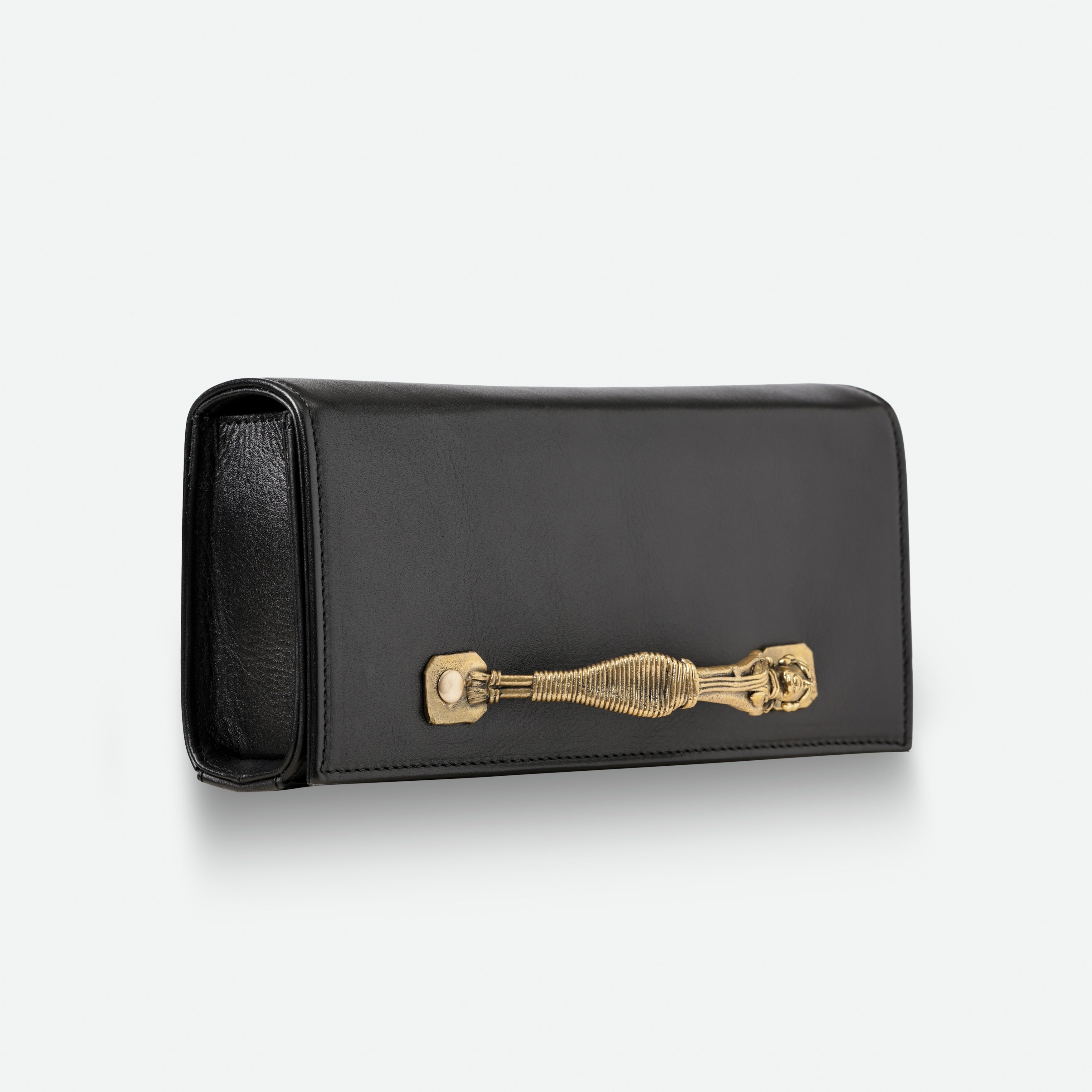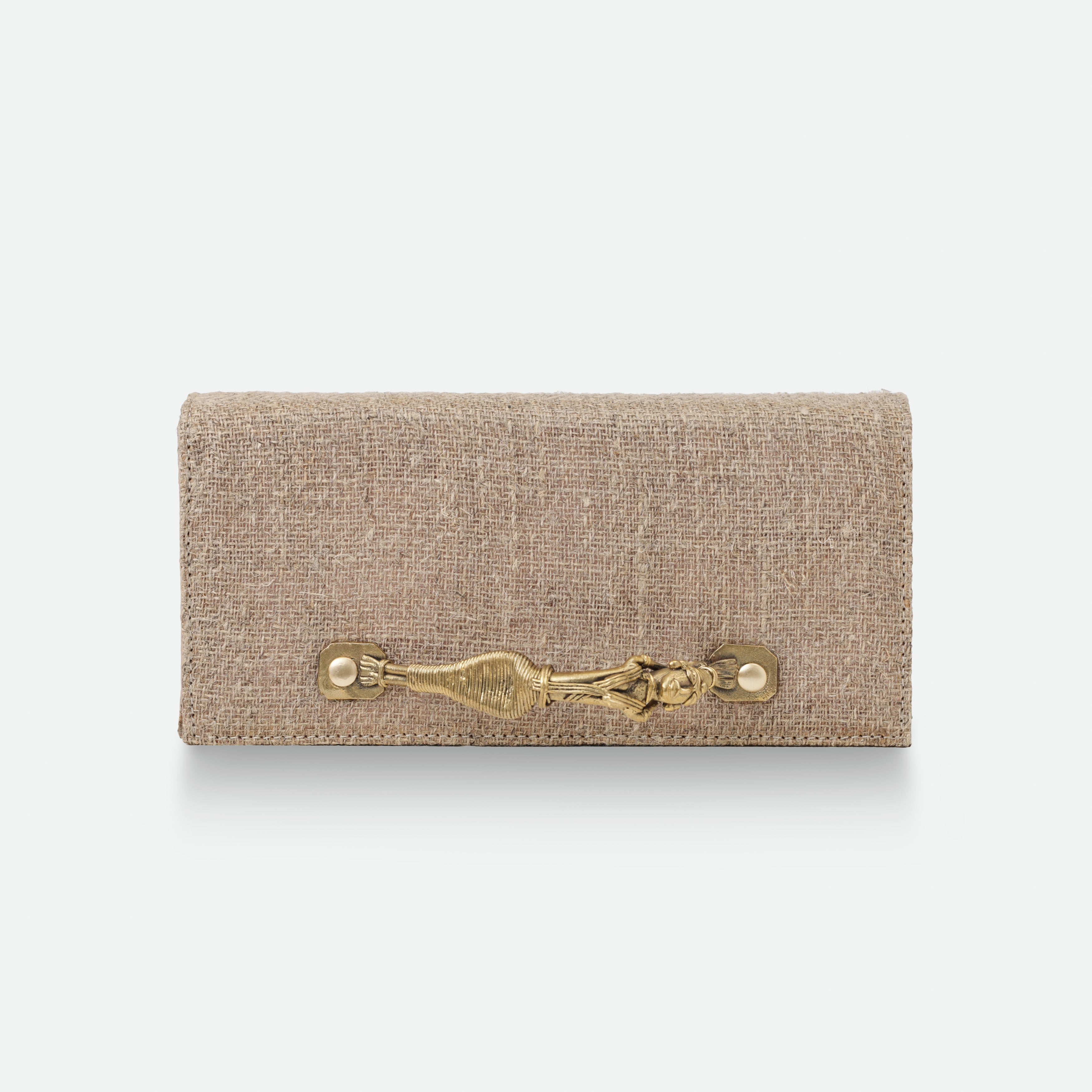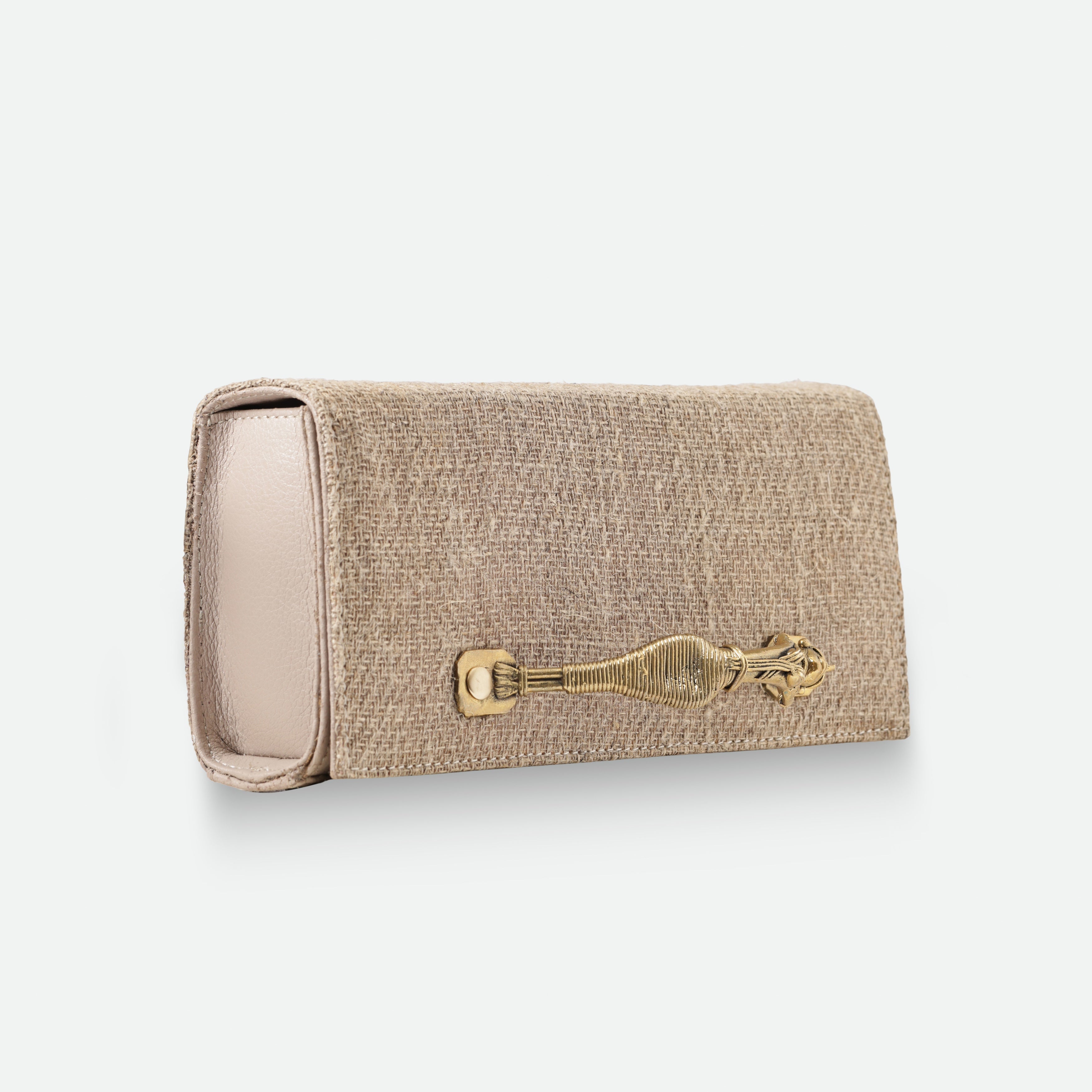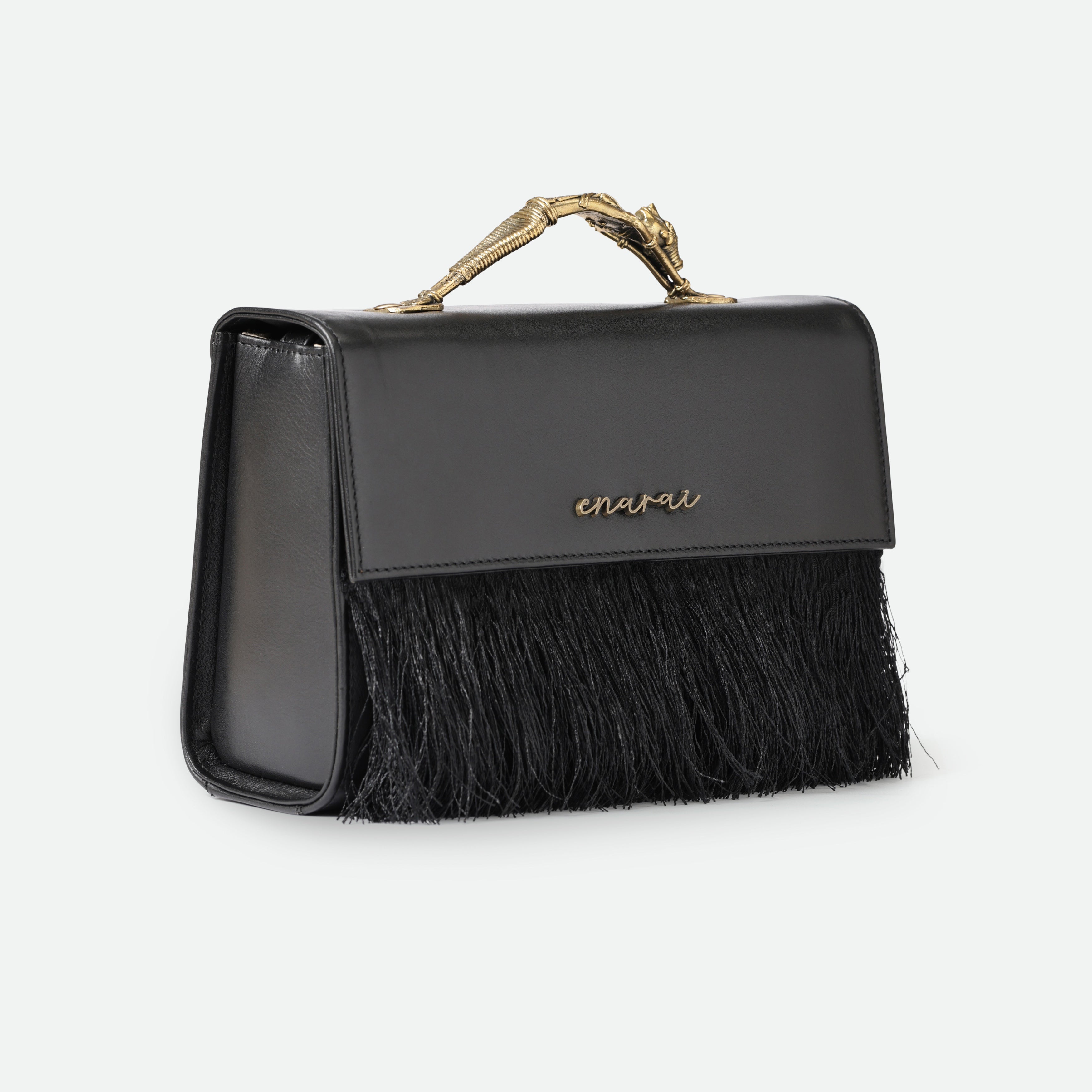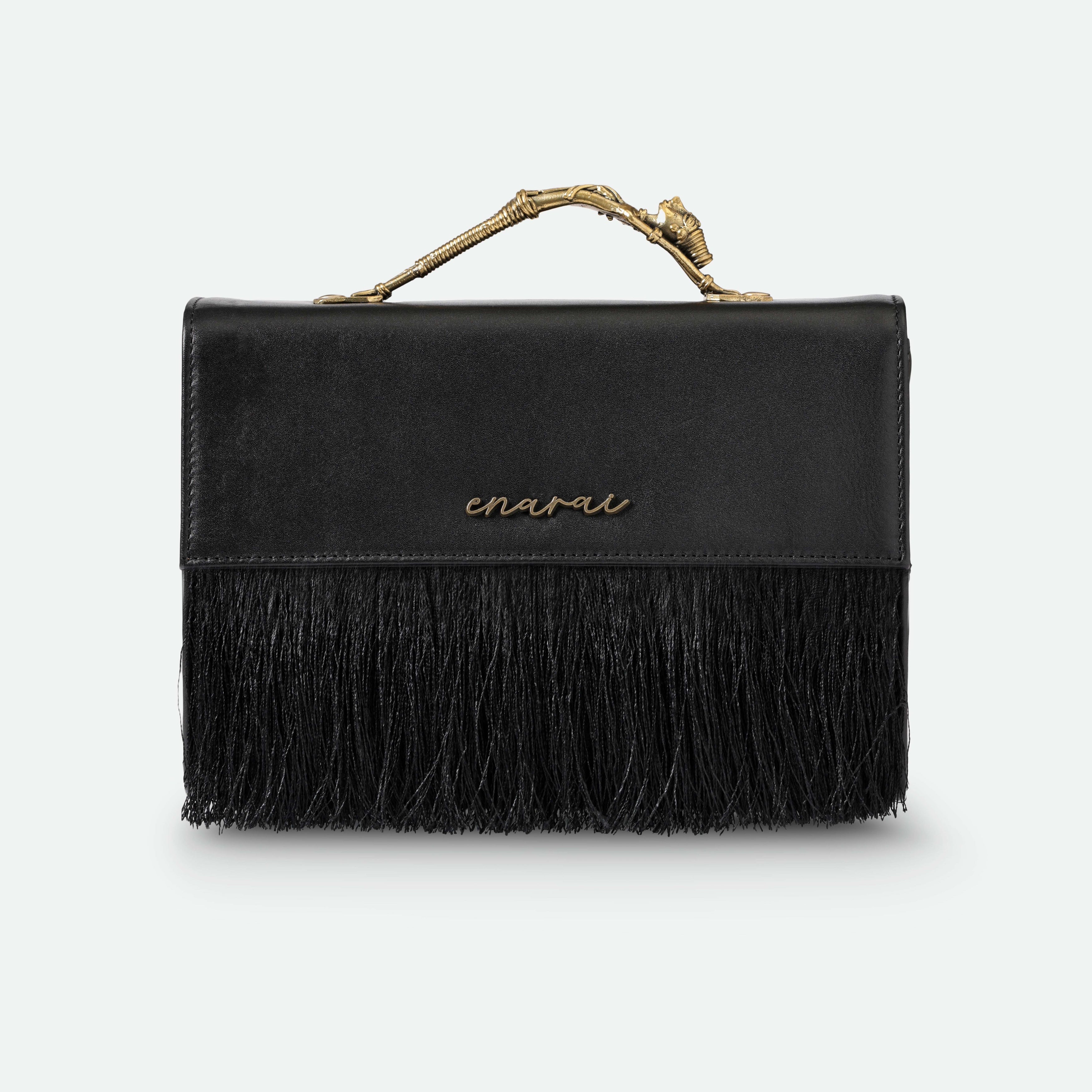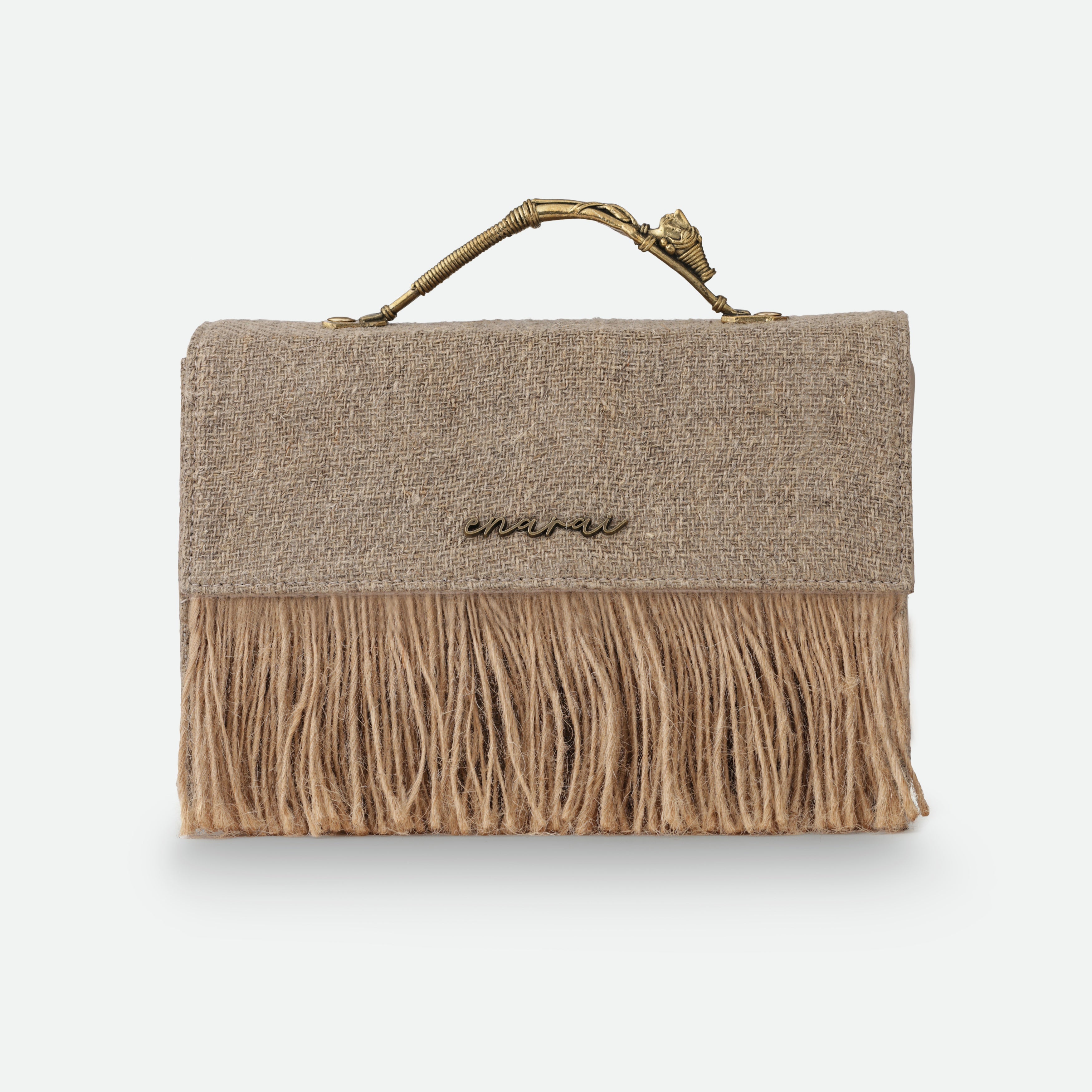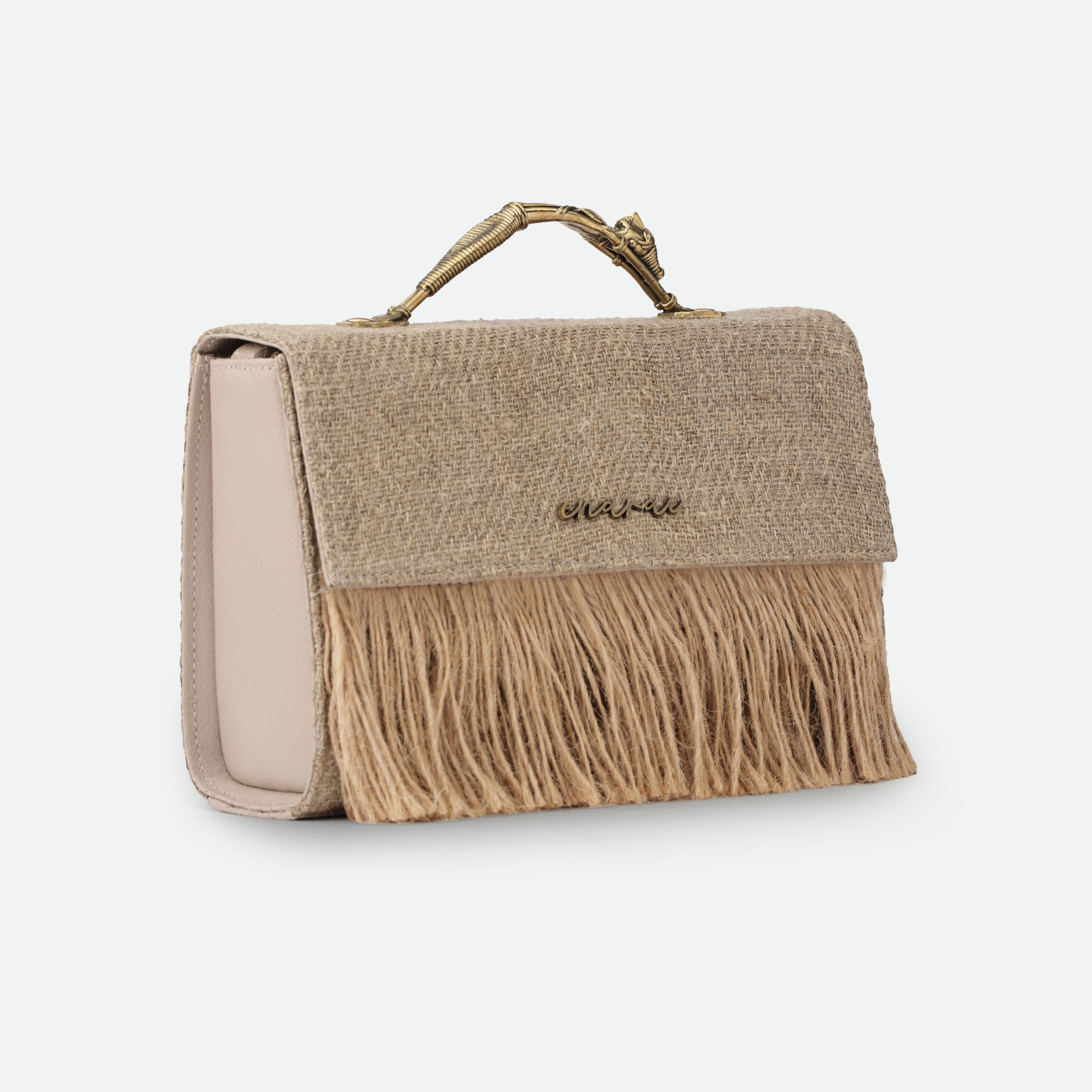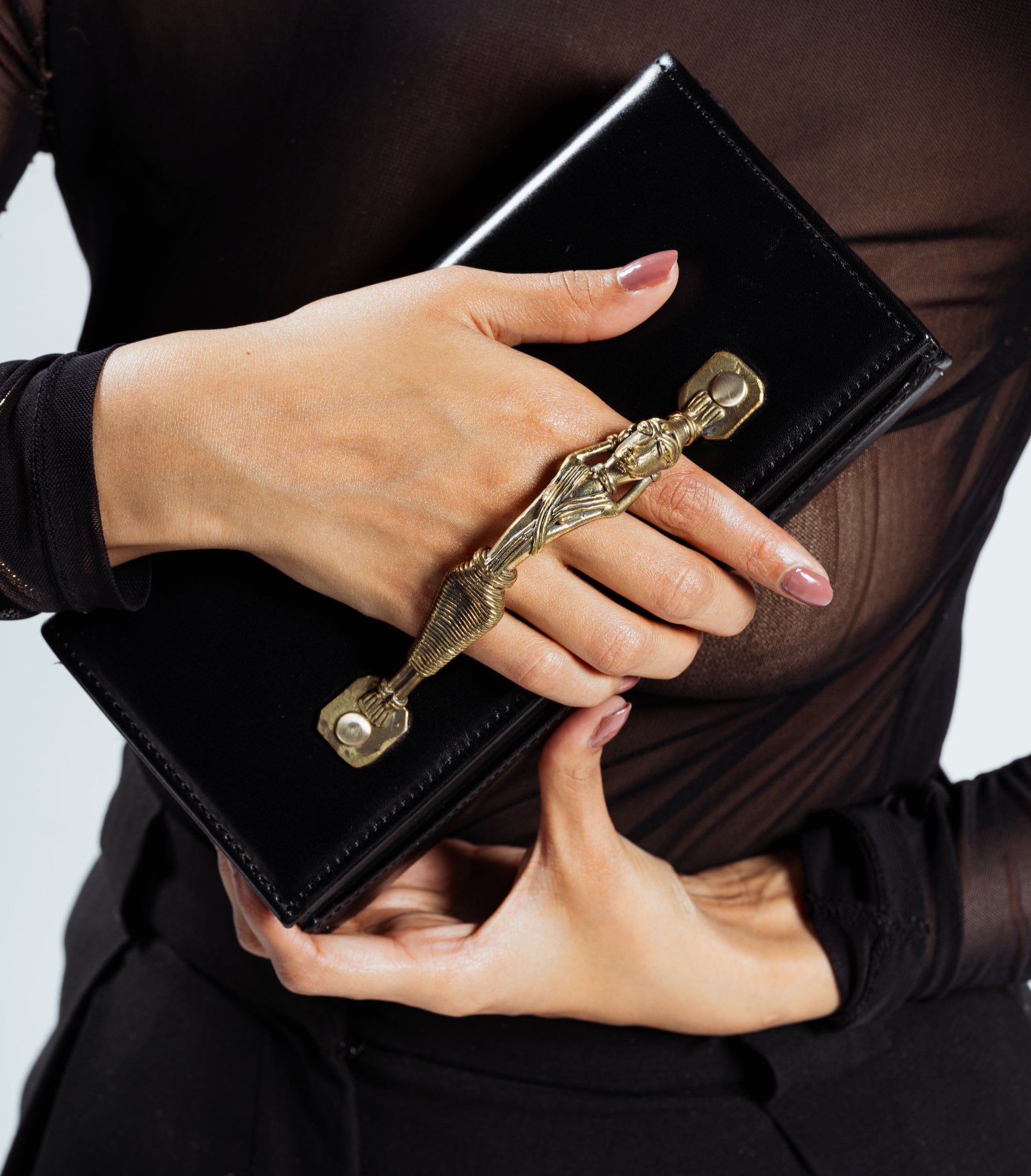
IT TAKES 8 DAYS TO MAKE ONE DOKRA HANDLE
WATCH below
THE DOKRA PROCESS
Dokra is a 4500-year-old metal casting technique still being practiced by tribal craftsmen in India.
Locally Sourced | Sustainable Materials
artisans use bees wax, resin, upcycled brass, river clay, rain prepped mud, sun baked drums and earthen kilns built inside their homes.
No Electricity | Slow & Seasonal
no electricity is used to make dokra handles. It is sun dried and rain prepped. If it rains too much or too little, the mud consistency is incorrect, resulting in air bubbles that show up as defects and blurs in the design. If it is too hot they cannot fire the kiln.
Ancient Technique
artisans still use the same methods their ancestors used 4000 years ago. Dokra is labor intensive; 1 in 4 handles come out damaged or broken at the end of the 8 day process
every enarai bag features one dokra handle
ps: the dokra handle on an enarai bag is actually a traditional door handle...while designing the bags we found that the shape of a door handle lent itself beautifully to a bag...despite the hard metal design you may be surprised by how ergonomically comfortable these handles are to hold
The History of Dokra
Dokra is a 4500-year-old metal casting technique with the earliest Dokra artifacts dating back to the Bronze Age from the Indus Valley Civilization. It is still practiced by tribal craftsmen in India today.
The name Dokra comes from the Dokra Damar tribes, who were traditional metal smiths that practiced this craft. Works depict daily scenes from tribal culture such as dancers, musicians, ornaments, animals, birds and jewelry.
The most famous dokra artifact, The Dancing Girl, was excavated from the Indus Valley Civilization and is currently on display at the National Museum in New Delhi, India.
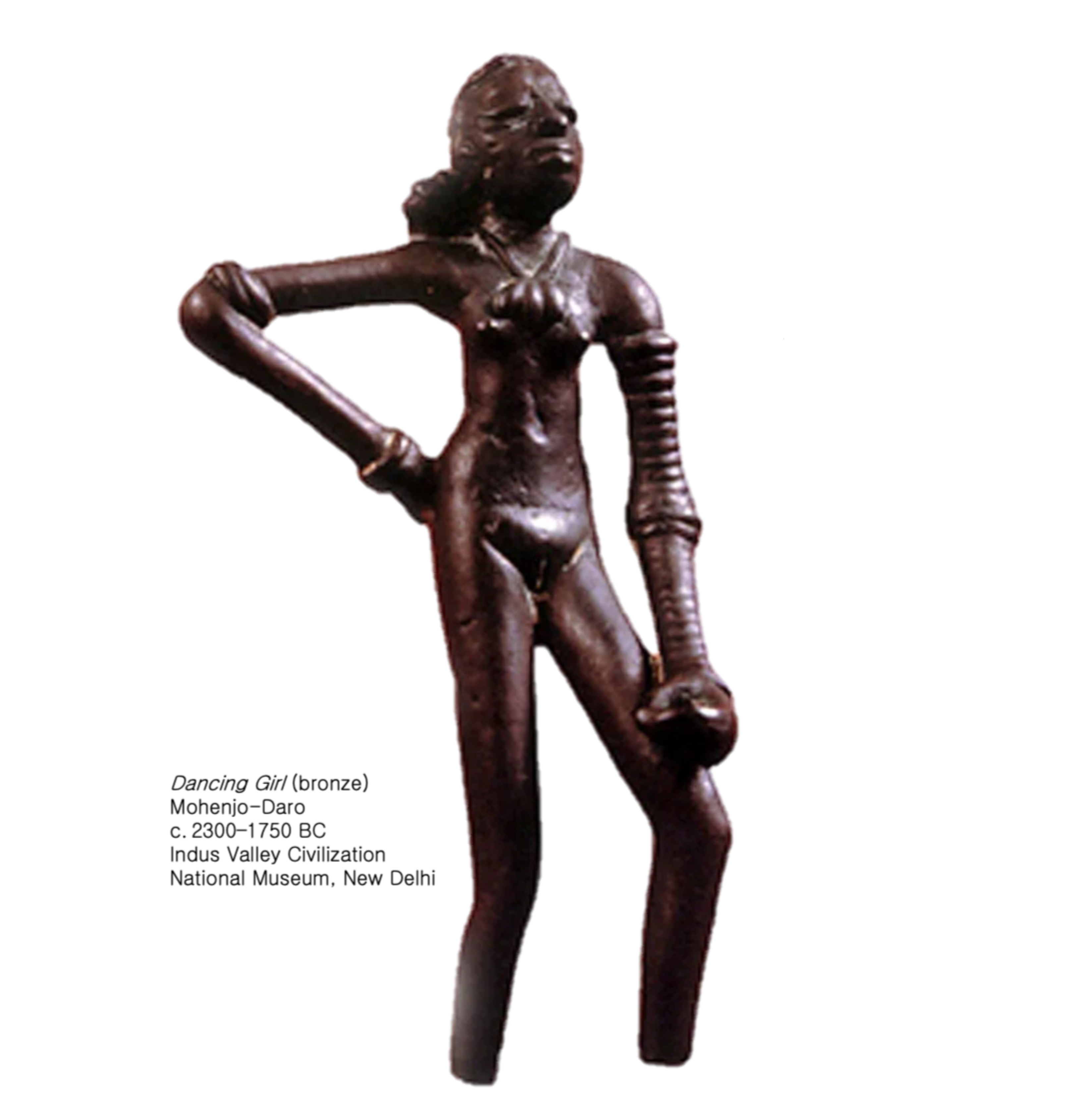
a 4500 year old craft from the
Indus Valley civilization
Archaeologist Gregory Possehl described Dancing Girl as "the most captivating piece of art from an Indus site" and states "We may not be certain that she was a dancer, but she was good at what she did and she knew it."
National Museum, New Delhi (India)
The Indian Museum, Kolkata (India)
Victoria and Albert Museum, London (UK)
The British Museum, London (UK)
Musée du quai Branly – Jacques Chirac, Paris (France)
Smithsonian Institution – National Museum of Asian Art, Washington, D.C. (USA)
The Museum of Fine Arts, Boston (USA)
National Gallery of Modern Art, New Delhi (India)
Chhatrapati Shivaji Maharaj Vastu Sangrahalaya, Mumbai (India)
The State Museum of Ethnography, Leipzig (Germany)
Museum of World Cultures, Gothenburg (Sweden)
Asia Society Museum, New York (USA)
Deccan Heritage Centre, Hyderabad (India)
PLEASE NOTE THAT THIS IS NOT A COMPREHENSIVE LIST. ENARAI CANNOT GUARANTEE THESE EXHIBITS WILL BE ON DISPLAY WHEN YOU VISIT, PLEASE CHECK WITH THE MUSEUM DIRECTLY SHOULD YOU DECIDE TO PLAN A VISIT TO VIEW DOKRA ART.
The Dokra Collection: Season 1

10% of every enarai sale goes to support the enarai foundation. Thank you for being a steward of craftsmanship.
This 4500-year-old craft has been passed down over generations without any formal education. The enarai foundation strives to document, highlight, preserve and incentivize the communities that create these craft forms by including them in the evolution of creative and sustainable craft preservation.

